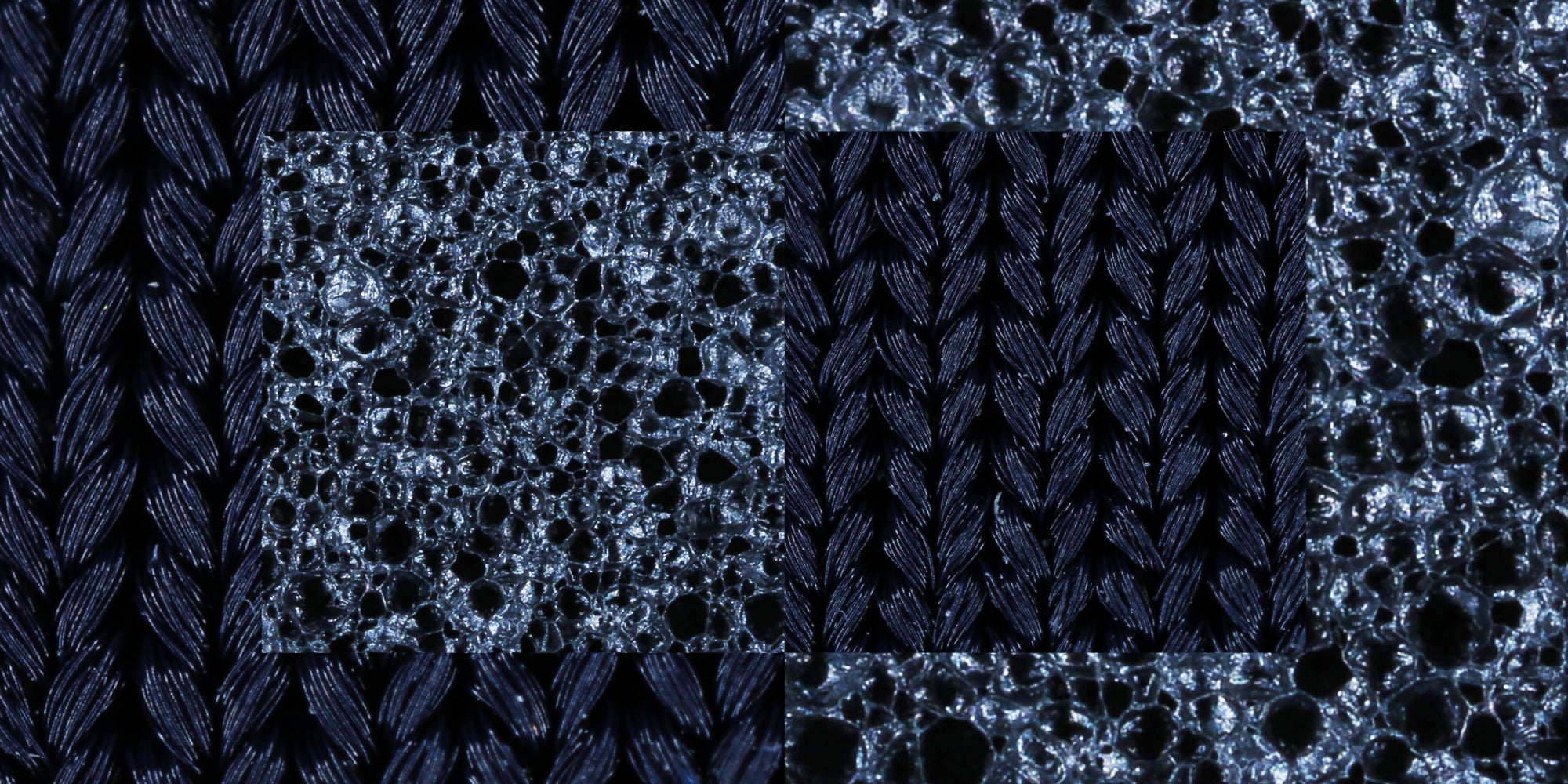
Materials & Design
To design the best wetsuit, we focused exclusively on features that help you surf better and longer.
Neoprene: Our suits are 100 percent Yamamoto Japanese rubber (#39 and #40) — the highest grade neoprene available. It’s not just water impermeable; it’s also light, warm, flexible, and durable.
Lining: We use 100% nylon jersey material on both the inside and outside of our suit. It's smooth, stretchy, and absorbs very little water — a perfect complement to the neoprene sandwiched inside.
Cut: We minimize the number of seams for comfort and for a perfect fit. Our wetsuits have only seven panels — half the number of most high-end suits. And because the seams are strategically positioned (located in areas where the least amount of stretching or compression occurs), our wetsuits experience less leakage over time and greater flexibility.
Construction: Our wetsuits are glued and blindstitched then taped in areas of high-stress with Yamamoto SCS tape — 0.5-mm neoprene with a smooth, gold finish.
Environmental Impact: FERAL wetsuits are constructed of limestone-based neoprene, as opposed to the traditional wetsuit industry’s petroleum-based standard. How much less environmental impact limestone-based rubber has over petroleum-based rubber is still unclear, but a longer-lasting wetsuit is good for your bank account, carbon footprint, and keeps more rubber from landfills.
We prototyped and tested a range of materials and designs until we knew what common wetsuit features to say no to, and why.
Fuzzy linings: Yes, they keep you warmer, especially if you’re wearing a low-grade-rubber wetsuit. A 0.5-mm-thick lining adds the equivalent warmth of a 0.1-mm-thick layer of neoprene, but with substantial additional weight. And most are made of polypropylene, which traps and absorbs a bunch of water. Learn more about how wetsuits really keep you warm here.
Smoothy chest and back panels: Smoothy neoprene keeps you warmer by decreasing the rate of evaporation on the exterior of your wetsuit (convective cooling). Most surfers sit low enough in the water that the smoothy on the chest and back isn’t exposed to the air, and sitting is when you actually get cold.
The air-bubble neoprene: Super warm and light, right? Nope! Air-bubble neoprene is a three-sheet sandwich of rubber held together with glue—and glue is neither light nor stretchy. The result is a heavier, less stretchy, less durable wetsuit with no insulation gains over normal neoprene.
All the other space-age “tech” you hear about: Proper scientific material studies are really expensive, and we all know the big wetsuit brands are neither scientists nor flush with extra cash. Remember, when they’ve infused materials from the International Space Station into the fibers of your suit to keep you warmer—that’s the marketing department talking—not their dedicated team of materials scientists.
Above: Yamamoto #39 neoprene and FERAL jersey material at 5X magnification